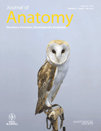
JOURNAL OF ANATOMY
Scope & Guideline
Fostering Innovative Discourse in Anatomical Research
Introduction
Aims and Scopes
- Anatomical Variations and Clinical Implications:
The journal frequently publishes studies on anatomical variations and their clinical significance, providing insights that can improve surgical techniques and patient care. - Advanced Imaging Techniques:
There is a consistent focus on utilizing advanced imaging methods, such as MRI and CT scans, to explore anatomical structures, which enhances understanding of human anatomy in both healthy and pathological states. - Integration of Anatomy in Medical Education:
The journal emphasizes the importance of anatomy in medical training, exploring innovative teaching methods and the use of cadaveric materials to enhance learning outcomes. - Experimental and Comparative Studies:
Research involving experimental models, particularly using animal studies to explore anatomical functions and pathologies, is a significant theme, contributing to translational research. - Multidisciplinary Approaches:
The journal supports interdisciplinary studies that connect anatomy with other fields such as physiology, pathology, and pharmacology, reflecting the integrative nature of modern medical science.
Trending and Emerging
- Application of 3D Imaging and Modeling:
There is an increasing trend in using 3D imaging and modeling techniques to study anatomical structures, which enhances the understanding of spatial relationships and can improve surgical planning. - Anatomy in the Context of Disease:
Research focusing on the anatomical basis of diseases, including studies on anatomical variations in patient populations with specific conditions, is on the rise, highlighting the relevance of anatomy in clinical settings. - Innovations in Anatomy Education:
Emerging themes in innovative teaching practices, including the use of technology and blended learning approaches in anatomy education, are being explored to enhance student engagement and learning outcomes. - Translational Research Approaches:
There is a growing interest in studies that connect anatomical research with clinical applications, emphasizing the importance of anatomical insights in understanding disease mechanisms and treatment strategies. - Environmental and Lifestyle Influences on Anatomy:
Recent publications are beginning to explore how environmental factors and lifestyle choices impact anatomical structures and variations, indicating a shift towards more holistic approaches in anatomical research.
Declining or Waning
- Traditional Cadaveric Studies:
While cadaveric studies have historically been a cornerstone of anatomical research, there seems to be a decline in purely descriptive cadaveric studies, possibly due to the increasing use of imaging technologies and less availability of cadaveric specimens. - Basic Morphometric Studies:
There is a noticeable reduction in the publication of basic morphometric studies that do not connect to clinical applications or advanced imaging, as the journal shifts towards more clinically relevant research. - Forensic Anatomy Studies:
The frequency of forensic anatomy studies has declined, suggesting a potential shift in focus towards more clinical and educational applications of anatomy, rather than forensic implications.
Similar Journals
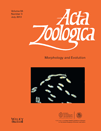
ACTA ZOOLOGICA
Elevating Understanding of Animal DiversityACTA ZOOLOGICA, published by WILEY, is a distinguished journal that serves as an essential resource for researchers and professionals in the fields of Animal Science, Zoology, Cell Biology, and Ecology. With its ISSN 0001-7272 and E-ISSN 1463-6395, this journal has been contributing to the scientific community since 1920 and continues to explore new dimensions in zoological research. As of 2023, it holds an impactful position with a Q3 ranking in Animal Science and Zoology as well as Ecology, Evolution, Behavior and Systematics, signifying its relevance and emerging influence in these domains. Although it is not an Open Access journal, ACTA ZOOLOGICA remains committed to disseminating high-quality research and facilitating scholarly discussions among its audience. The journal aims to publish original articles, reviews, and critical findings that enhance understanding of animal biology and conservation, addressing global ecological challenges. Its rankings in Scopus further underscore its scholarly reputation, making it a valuable addition to the libraries of institutions and individuals alike.
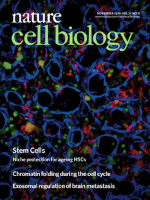
NATURE CELL BIOLOGY
Unraveling the Mysteries of Life at the Cellular LevelNature Cell Biology, published by Nature Portfolio, is a premier journal in the field of Cell Biology, distinguished by its impactful contributions to understanding cellular mechanisms and processes. With an impressive impact factor that places it in the top tier (Q1) of its category, it ranks #9 out of 285 in Scopus's metrics, reflecting a 97th percentile in the fields of Biochemistry, Genetics, and Molecular Biology. The journal has been a vital resource since its inception in 1999 and continues to deliver high-quality, peer-reviewed research that advances the study of cellular structures and functions. Although it does not offer open access options, subscribers and institutional libraries can access this wealth of knowledge to keep abreast of the latest discoveries and methodologies in cell biology. Researchers, professionals, and students alike will find Nature Cell Biology to be an indispensable tool for fostering innovation and facilitating academic discourse in this dynamic field.
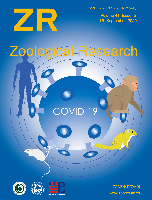
ZOOLOGICAL RESEARCH
Empowering Researchers with Unrestricted Access to KnowledgeZoological Research, published by Science Press, stands as a premier open-access journal in the fields of animal science, zoology, and ecology. Since its inception in 1980, it has fostered an inclusive platform for innovative research and dialogue within the scientific community, enabling researchers from across the globe to share their findings and insights. The journal's significant impact is underscored by its classification in the Q1 quartile across multiple categories, including Animal Science and Zoology, Ecology, and Nature Conservation for 2023, as well as its impressive rankings within Scopus, placing it in the top tier of its respective fields. Situated in Beijing, China, Zoological Research not only contributes to advancing knowledge but also emphasizes the critical importance of conservation practices in today’s rapidly changing ecosystems. With its commitment to open access, researchers, educators, and students alike benefit from immediate, unrestricted access to vital scientific information, making it an essential resource for anyone involved in the biological sciences.

ANATOMICAL SCIENCE INTERNATIONAL
Fostering Excellence in Anatomical Science WorldwideANATOMICAL SCIENCE INTERNATIONAL is a distinguished peer-reviewed journal published by SPRINGER, focusing on the field of anatomy and its applications within the broader spectrum of medical science. With an ISSN of 1447-6959 and an E-ISSN of 1447-073X, this journal provides a robust platform for the dissemination of innovative research and findings from around the globe, featuring studies that span from basic anatomy to advanced clinical applications. As of 2023, it holds a respectable Q2 rank in Anatomy and a Q3 rank in the miscellaneous category of Medicine, reflecting its growing influence and contribution to the field, with Scopus rankings placing it in the 59th percentile of Medicine - Anatomy journals. Although ANATOMICAL SCIENCE INTERNATIONAL is not an Open Access journal, it remains indispensable for researchers, professionals, and students who seek to stay at the forefront of anatomical science research. The journal's ongoing commitment to excellence is evident through its continuous publication, spanning from 2002 and projected through 2024, making it a vital resource for those aiming to advance their knowledge and practice in anatomy.
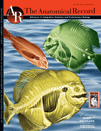
Anatomical Record-Advances in Integrative Anatomy and Evolutionary Biology
Exploring the Intersections of Anatomy and Evolutionary Biology.Anatomical Record-Advances in Integrative Anatomy and Evolutionary Biology, an esteemed journal published by WILEY, serves as a pivotal platform for scholars in the fields of anatomy, biotechnology, ecology, evolutionary biology, and histology. With an ISSN of 1932-8486 and an E-ISSN of 1932-8494, this journal has demonstrated its academic rigor by maintaining a Q2 ranking across multiple relevant categories, including Anatomy and Biotechnology, and consistently achieving a high Scopus ranking in its respective fields. Its scope, covering integrative approaches to anatomical research and evolutionary studies, fosters interdisciplinary collaboration and innovation. Researchers and practitioners can access the journal through various open-access options, ensuring that groundbreaking findings are disseminated widely. As a vital resource for advancing knowledge and exploring emerging trends, this journal greatly contributes to the understanding of biological systems and evolutionary processes, making it an essential read for those dedicated to pushing the boundaries of their respective disciplines.
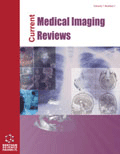
Current Medical Imaging
Bridging Technology and Patient Care in ImagingCurrent Medical Imaging is a reputable journal published by Bentham Science Publishers, specializing in the dynamic field of medical imaging, with a strong emphasis on both clinical applications and technological advancements. Established in 2007, the journal has made significant contributions to the fields of Internal Medicine and Radiology, consistently ranking in the Q3 quartile for these categories as of 2023. The journal's ISSN 1573-4056 and E-ISSN 1875-6603 ensure wide accessibility for scholarly communication, although it operates under a traditional access model. With its continuous publication from 2011 to 2024, Current Medical Imaging aims to bridge the gap between advanced imaging techniques and their practical application in patient care, making it indispensable for researchers, healthcare professionals, and students eager to stay at the forefront of innovations in imaging technology and clinical practice.

BMC Zoology
Empowering researchers with cutting-edge insights.BMC Zoology, published by BMC, is a distinguished open-access journal that has been advancing the field of zoological research since its inception in 2016. With an impressive Q2 ranking in both Animal Science and Zoology categories as of 2023, the journal occupies a significant position in the academic landscape, engaging a global readership dedicated to the exploration of animal biology. Based in the United Kingdom, BMC Zoology prides itself on providing a platform for innovative research, fostering collaboration among scientists, and facilitating access to high-quality scholarly articles. Researchers and practitioners in zoology can benefit from its extensive repository of articles that span various areas including conservation, ecology, and evolutionary biology. As an essential resource for scholars and students alike, BMC Zoology commits to enhancing the dissemination of knowledge in the zoological sciences through its open-access model, ensuring widespread access to cutting-edge research findings.
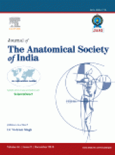
Journal of the Anatomical Society of India
Pioneering insights in anatomy and forensic medicine.The Journal of the Anatomical Society of India, established in 1960, is a key publication in the field of anatomy and pathology, published by Wolters Kluwer Medknow Publications. With an ISSN of 0003-2778 and an E-ISSN of 2352-3050, this journal serves as a vital platform for disseminating innovative research and advancements in anatomical sciences. Although it currently features a Q4 ranking in both the categories of Anatomy and Pathology and Forensic Medicine as of 2023, the journal aims to elevate scientific discussions and collaborations among researchers, professionals, and students. The impact factor highlights its relevance in the scientific community, although specific metrics are currently unavailable. Located in the dynamic hub of Mumbai, India, the journal encapsulates a commitment to enriching academic discourse while addressing the latest developments and breakthroughs in the field. Researchers looking for a valued resource within anatomy and related disciplines will find this journal an essential read.
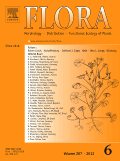
FLORA
Advancing Knowledge in Evolutionary BiologyFLORA is a distinguished journal published by Elsevier GmbH, focusing on the realms of Ecology, Plant Science, and Evolutionary Biology. Established in 1975, this journal has been a vital platform for researchers and professionals, disseminating groundbreaking findings and insights relevant to the plant sciences. With an impressive impact factor and a current Scopus ranking placing it in the second quartile (Q2) across multiple categories, FLORA is recognized as a critical resource for advancing knowledge in its respective fields. The journal publishes both traditional research articles and significant review papers, ensuring a broad spectrum of academic engagement. Although not open access, FLORA remains committed to enhancing the scientific discourse and fostering collaboration among scholars worldwide. Researchers seeking to enrich their understanding of ecological dynamics and plant biology will find FLORA to be an essential addition to their academic repertoire.
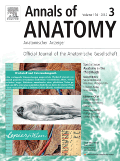
ANNALS OF ANATOMY-ANATOMISCHER ANZEIGER
Pioneering Research in Anatomy and DevelopmentANNALS OF ANATOMY - ANATOMISCHER ANZEIGER is a premier journal published by Elsevier GmbH, focusing on the intricacies of anatomical research and developmental biology. Established in 1992, this journal has continuously contributed to the advancement of knowledge in these fields, boasting an impressive impact factor that positions it within the Q2 quartile for Anatomy and a respectable ranking in Developmental Biology. With a Scopus ranking of #17 in Anatomy and #45 in Developmental Biology, ANNALS OF ANATOMY stands as a critical resource for researchers, professionals, and students alike, fostering scholarly dialogue and innovation. While currently not an open-access journal, its comprehensive scope and rigorous peer-review process ensure that the research published is of the highest quality. Based in Germany, this journal addresses a diverse range of topics and remains an essential platform for disseminating significant findings in the anatomical sciences and their interconnections with other biological fields.